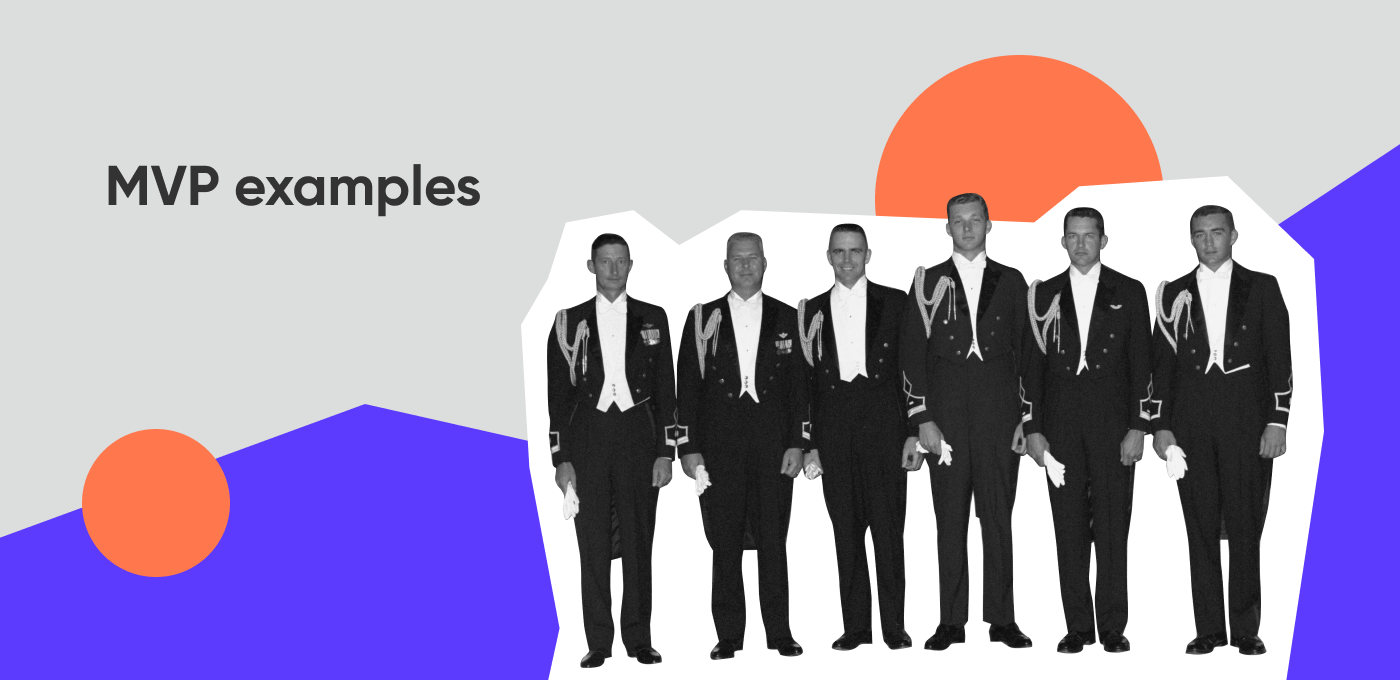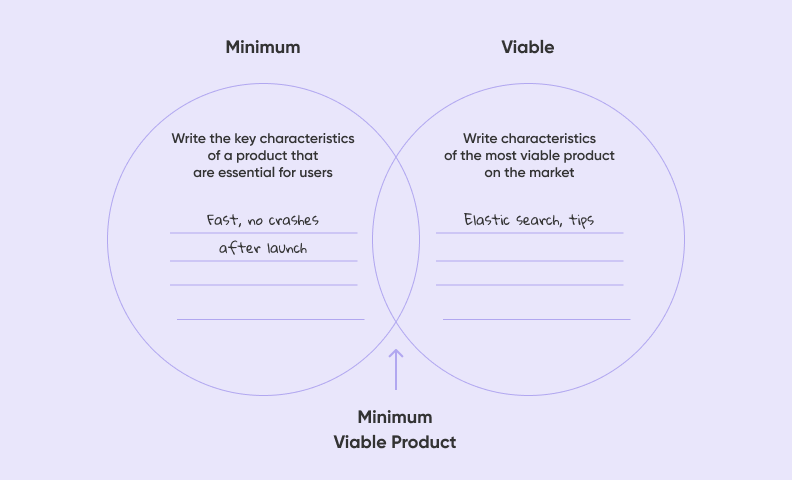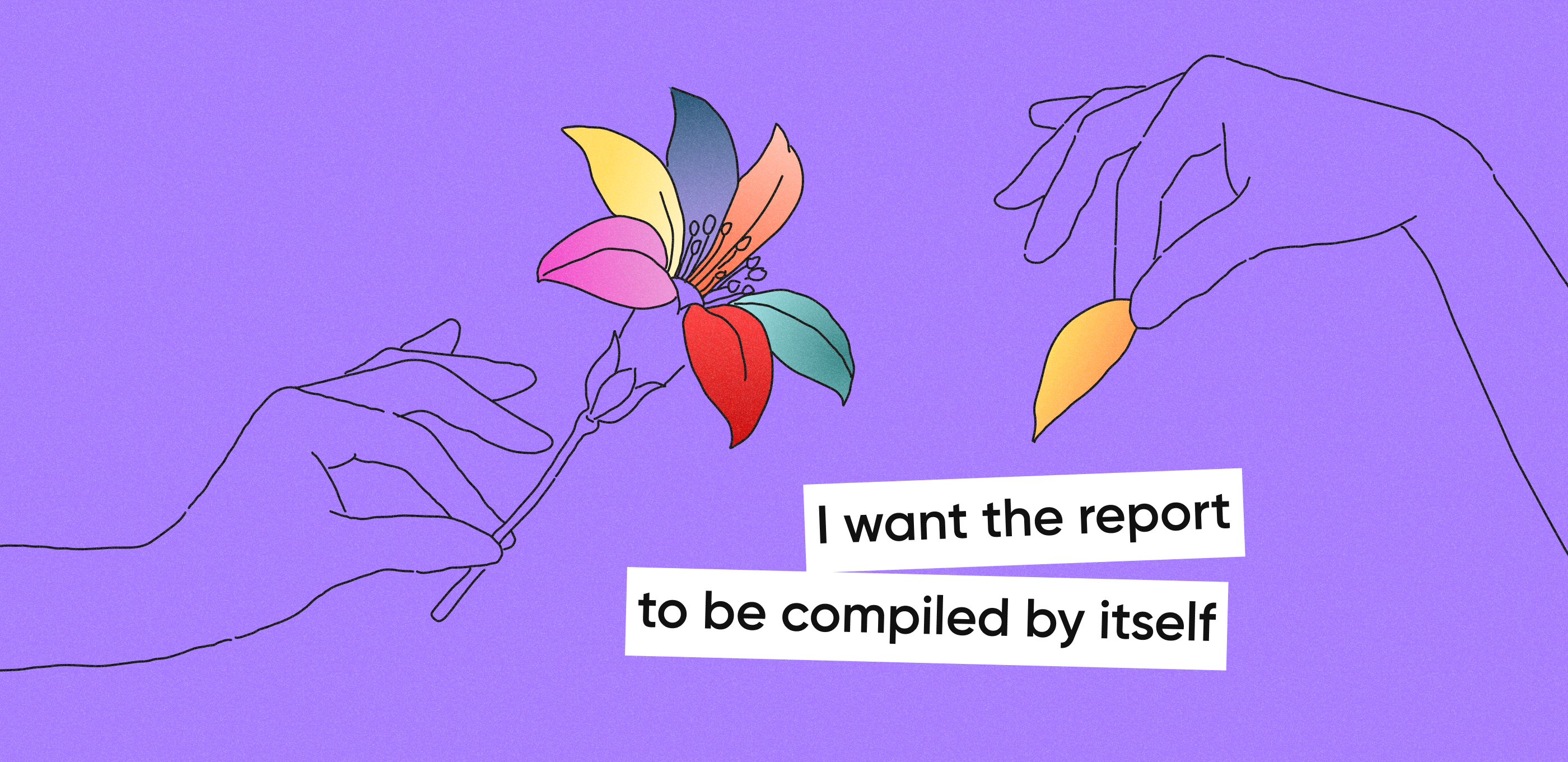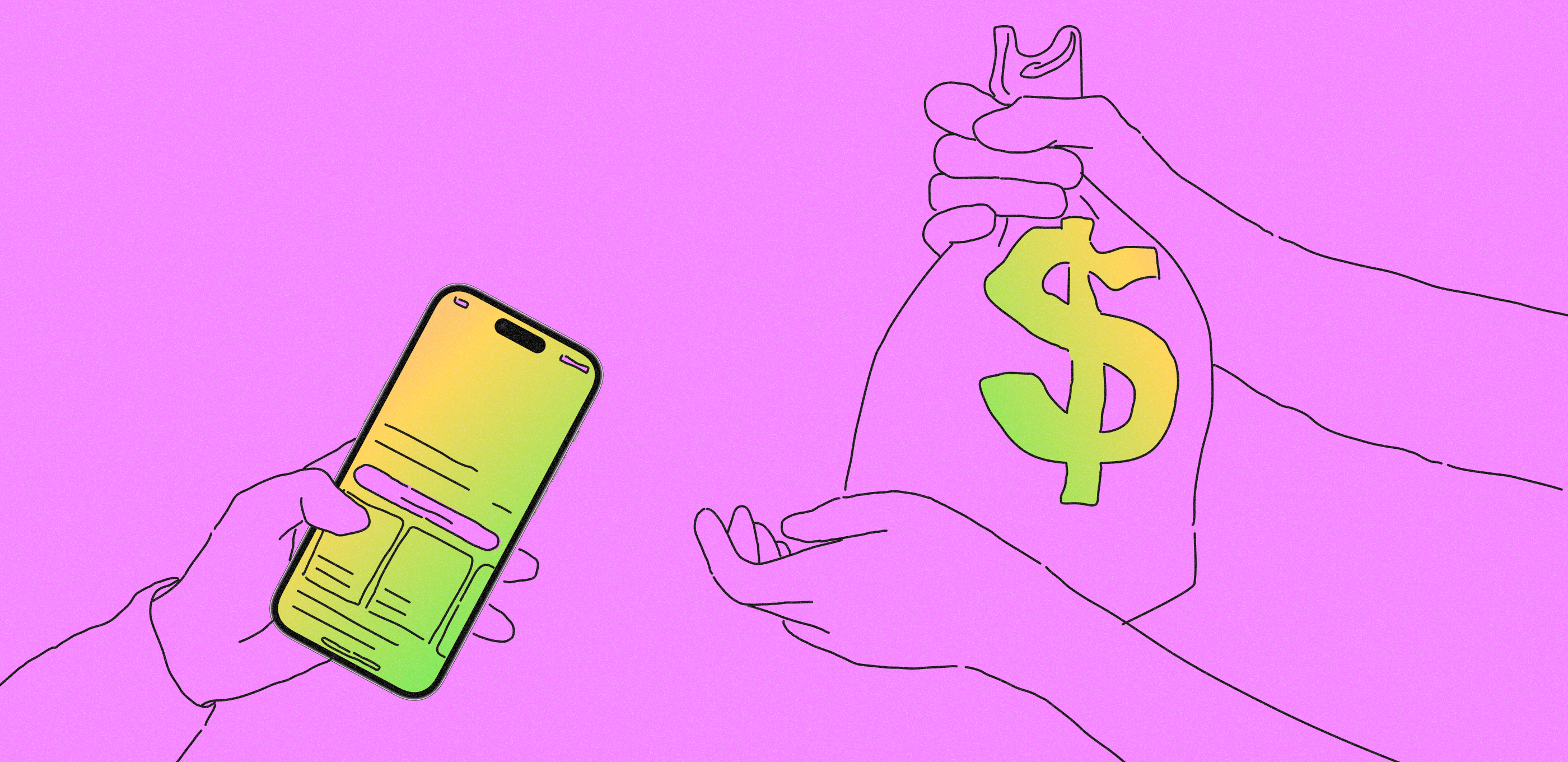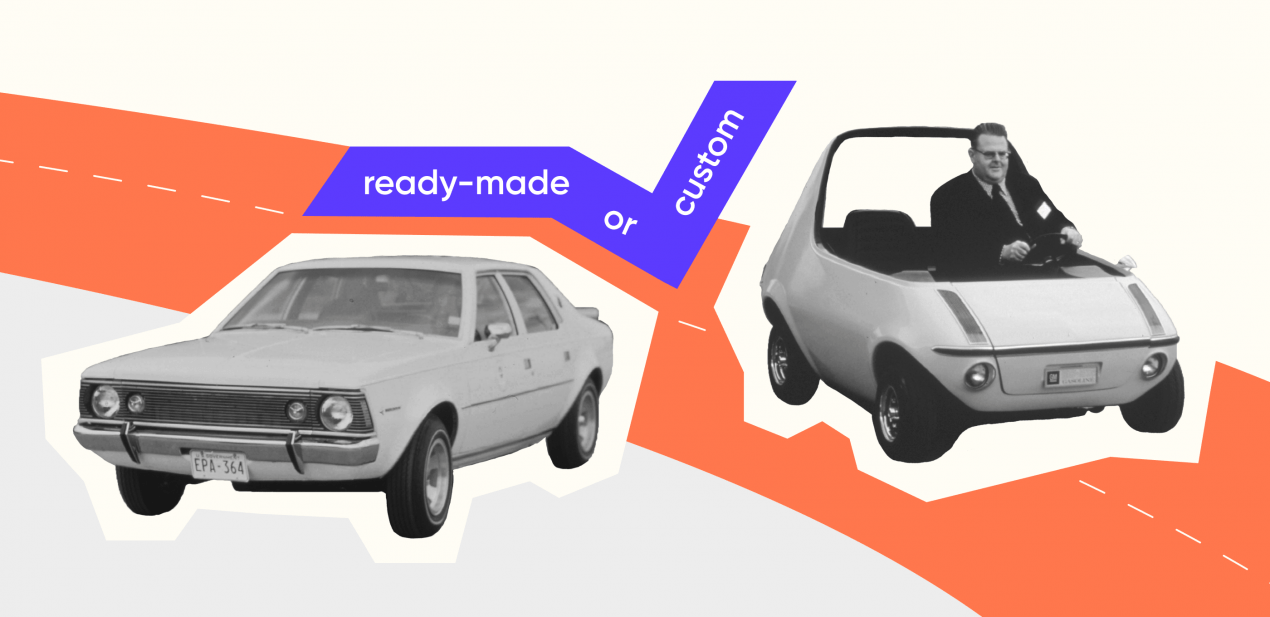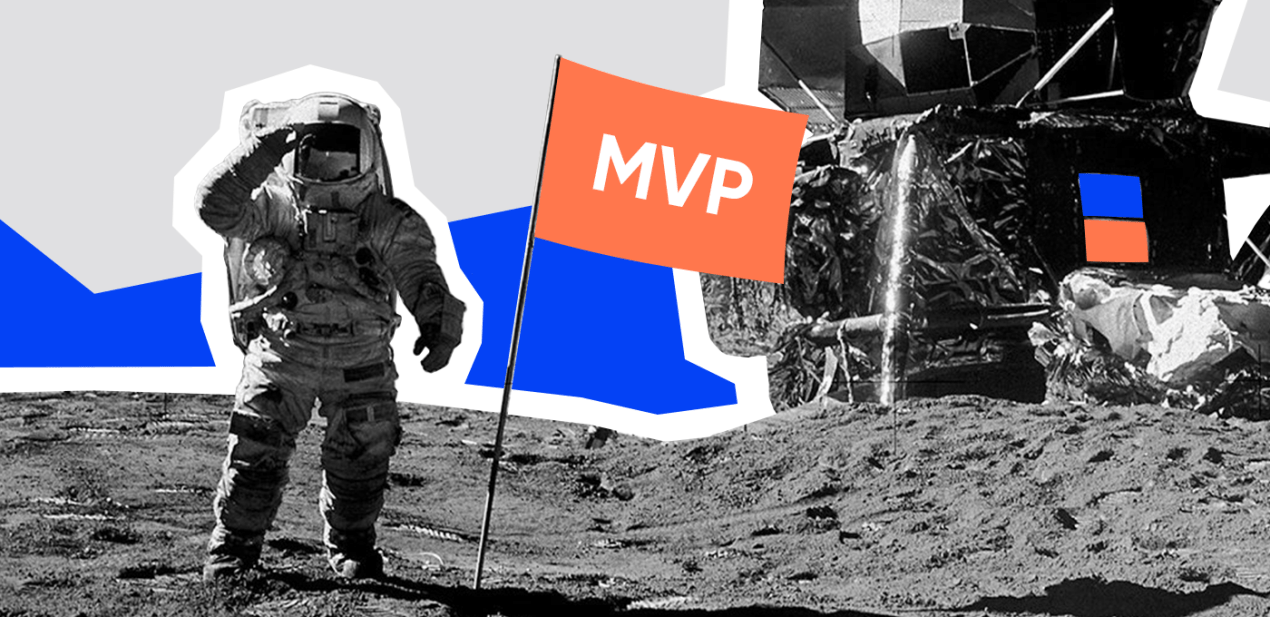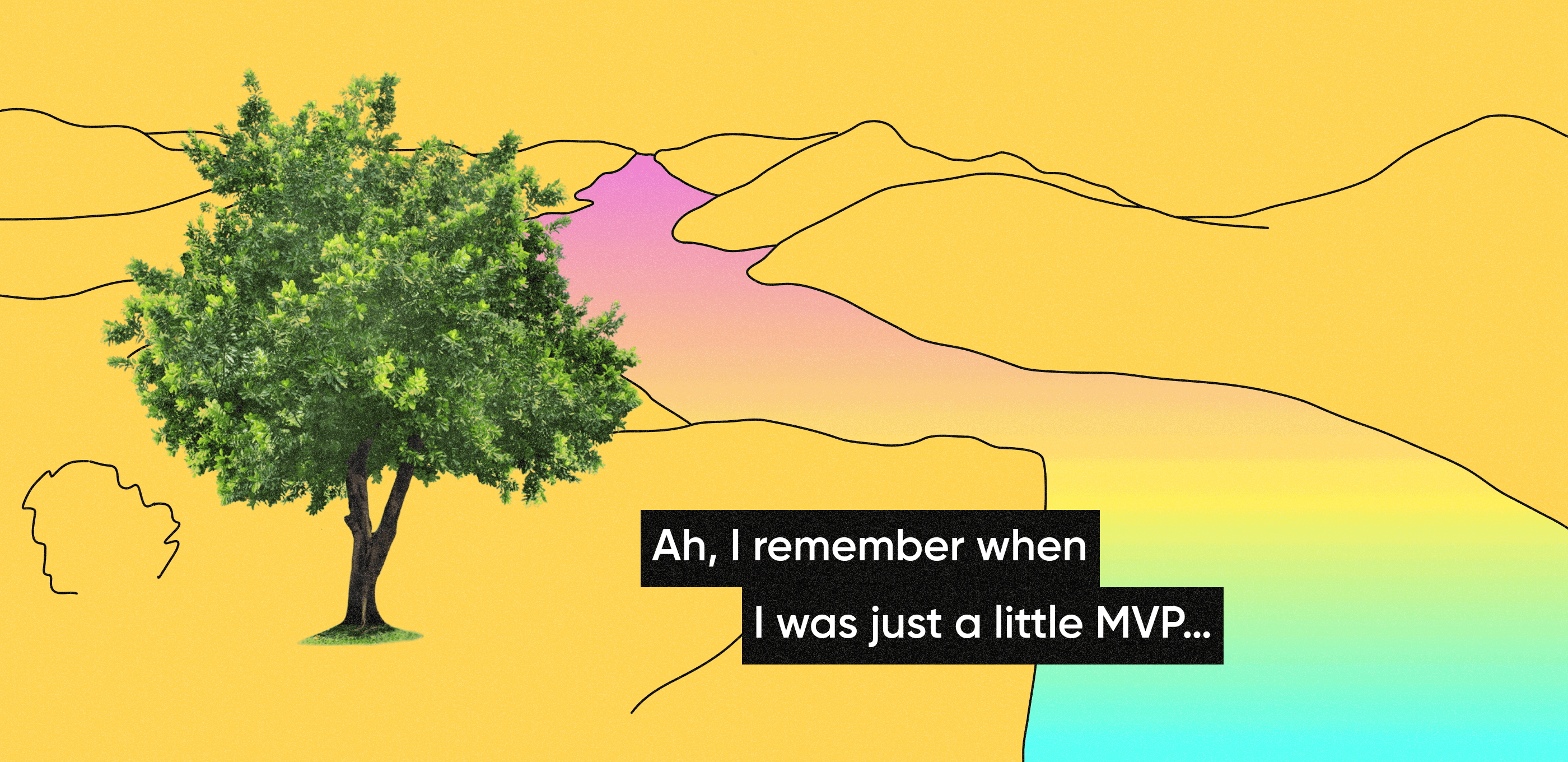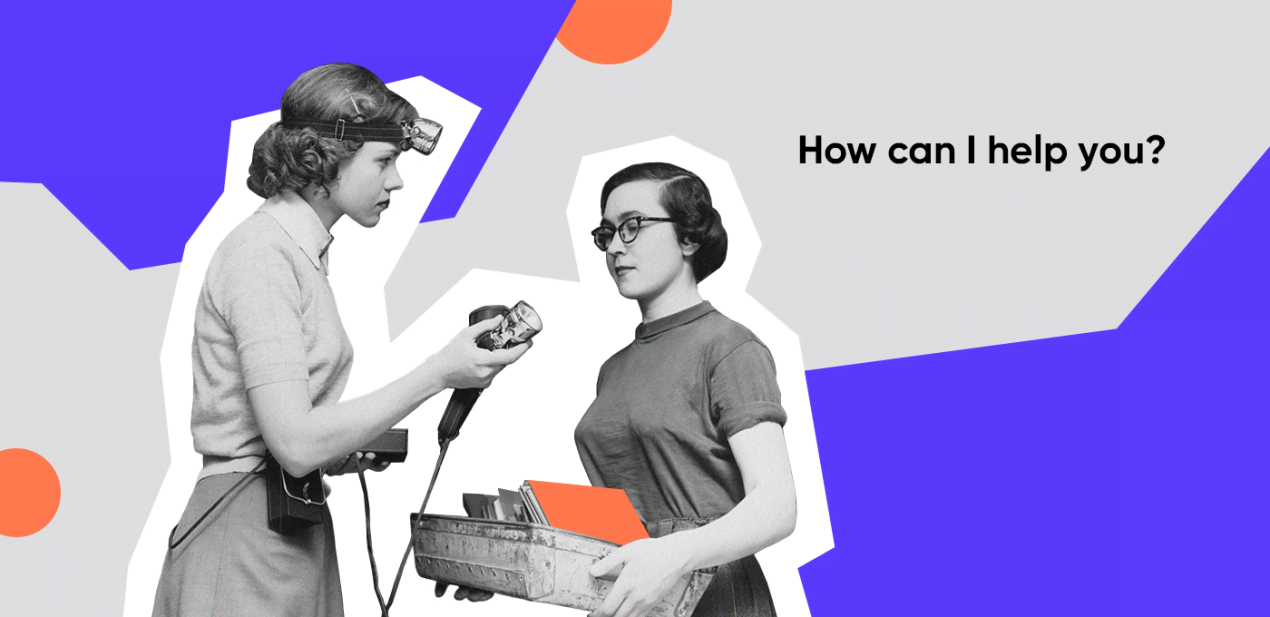What is MVP?
Don’t skip the basics! Let’s start with minimum viable product definition — that is what letters MVP stand for. It is the first version of an app, with only the necessary features for functioning the minimum set of features required to meet the needs of the very first users.
Imagine, an MVP is like a tasting sample of the fancy multi-tier wedding cake. Before ordering it for an event, you get a couple of pieces to choose the sponge and the frosting, give back your feedback and let the baker make corrections.
Here are what companies of different sizes use MVPs for:
Validating their hypothesis. The minimum viable product starts with the hypothesis that you want to test with some real-time data and experience. Let’s say you want to open a flower delivery service and deliver bouquets to customers within 15 minutes from the ordering time. Is there going to be a demand? You’ll never know until you try. An MVP is an excellent way to test the waters with a tight budget and timeframe before investing money into a full featured app.
Сollecting feedback from real-time users. After releasing an MVP, companies can see reviews from real users who’ve already tried out the product. This feedback provides deeper insights into user preferences and pain points and helps you to understand which features users find valuable and what they’d like to improve. User-centric approach is the logical choice as customers’ level of satisfaction directly influences the app’s popularity and revenue. It’s better to collect proper feedback before investing into a full-on app.
Adjusting the future solution. Starting with an MVP not only saves your money during the development stage, but also helps to make well-informed decisions, when budgeting for the upcoming project. Regardless of whether you focus on improving existing features, adding new functions, or addressing user concerns, the data gathered in the initial stages will guide the development team. This way, you won’t spend a fortune on, for example, implementing expert data analytics tools when the customers actually need a friendly chatbot for newbies.
How can you know which features are suitable for your MVP? Easy! You will need to include must-haves only — those features that bring the idea to life. Usually, this set contains onboarding, a search bar, a chat with customer support, push notifications, plus any specific features. For example, if it is an MVP of a food delivery app, you will need a sign-up/log-in page, menu, delivery settings, and payment options, so that users can place an order.
What is not an MVP?
Important: sometimes people confuse an MVP and a prototype, thinking it is the same thing. Here is the difference: a prototype is a sample or a basic plan of your product or service. Typically, companies use prototypes internally to explain a larger concept. For example, to show the team what they’re supposed to build, while working on the project. It can be just a sketch or an interactive design, developed in Figma. The point being that you can’t release a prototype and give it to users, as it’s not a functioning app or website.
Also, you shouldn’t confuse an MVP and a proof of concept (PoC). PoC is the first stage of a product, when you need to check if a project is feasible. It takes place even before hiring a full team or raising any investments. A proof of concept usually includes a project scope, technical validation, success criteria, risk analysis, and a cost estimate. In contrast to an MVP, it doesn’t provide any market value and it can be useful only for businesses.
A minimum viable product is not a plan or a draft. Instead, it is a fully functioning version that is ready to go on the market. MVPs are released publicly to receive honest market feedback and to course-correct in the right direction.
Minimum viable product template
A minimum viable product definition comes from two words: ‘minimum’ means a solution has a limited set of features, but ‘viable’ means they are enough for the mobile app to function well.
To plan your MVP product development, you can use our template and perform a brief competitors research and overview of your idea:
Top 4 types of MVP
To better understand why certain minimum viable product examples succeeded, first you need to understand what type of an MVP they used and what they started with.
There are many approaches to MVP development. To save some time, we picked the 4 most popular minimum viable product templates, broke them down, and described how startups would benefit from them.
Wizard of Oz MVP is the half-manual, half-functioning solution. Users think they use an app when in reality, the core functionality relies on humans or ‘wizards’ behind the curtains.’ Humans can’t deliver many features simultaneously, so usually, a minimum viable product template like this is used for focusing on 1-3 main sections of a solution.
👍🏻 Best for: testing the representation of the solution itself with a limited number of features.
Piecemeal MVP is a way to test your idea with already existing services and platforms without pulling extra resources. Let’s imagine you want to build a marketplace to sell pet goods. Before developing the solution, you can check other marketplaces already out there and see if there is an actual demand in the area.
👍🏻 Best for: introducing the solution to the market with a tight budget.
Concierge MVP is human-based. Within this type, most solution functions are replaced with people, or ‘concierges,’ that serve customers and collect their feedback on the idea.
👍🏻 Best for: checking if an app is relevant to the market needs.
Single Feature MVP is also called ‘One Painkiller.’ This minimum viable product template works like this: you pick one key feature that will be a painkiller for your target audience and solve their problems. Usually, these single features correlate with a unique selling point of a startup.
👍🏻 Best for: verifying the technical feasibility of an app.
15 apps that started as MVPs
Let’s get right to the minimum viable product examples. The beginning of any startup is the business idea validation, and that’s why you can’t skip the MVP development stage. To inspire you, we collected stories about 6 different solutions that started as an MVP.
Amazon
Amazon is one of the most successful minimum viable product examples. Jeff Bezos started the marketplace in the early 1990s as an online bookstore. The website was a one-painkiller MVP: Bezos began brainstorming a list of ideas that he could sell successfully on the internet. From 20 different options, he went down to five products, which included videos, books, software, computers, and even CDs.
Eventually, Bezos decided on books as the most profitable and demanding product online. He started Amazon that is now the #1 eCommerce platform with millions of various products.
Airbnb
Airbnb began with an air mattress, bed, and breakfast. In 2007 two product designers Brian Chesky and Joe Gebbia struggled to pay for an apartment in San Francisco and rent extra space. They launched a minimum viable product of a room-exchanging platform with their house and built it into an $85 million company.
Dropbox
Dropbox had a revolutionary idea to create online storage for files. Instead of paying a fortune for a file-sync solution and building an architecturally complex app, they started with a simple explanatory video. By the way, it is another way to create an MVP that we did not cover here.
The 3-minute video showed how Dropbox worked and the functions it had. The minimum viable product strategy was effective, and the number of signups increased 5x overnight, without an actual product yet. Just the experience of seeing a video about the product was enough to sell the idea.
Mark Zuckerberg’s initial idea was to connect everyone on campus. He started with Facemash, a website where users compared two pictures and decided who was ‘hot’ and ‘not.’
Then it evolved to the website called Thefacebook, an actual MVP of the social networks. It was rolled out in 4 top American universities — Harvard, Stanford, Columbia, and Yale. After a year of testing on the segmented audiences, they opened access to everyone, and that is how the story of Facebook started.
Zappos
Zappos is a marketplace for branded shoes and clothing. The concept of shopping online seems obvious now, but back in 1999, Nick Swinmurn had to find a way to test the hypothesis that customers were ready to use the Internet to buy shoes.
To start, he chose ‘Wizard of Oz’ MVP. Swinmurn went to the local stores in the San Franсisco area, took pictures of shoes they sold, and uploaded them to the website. When a user would place an order, he would go to a store, buy the pair and ship it over.
Long story short, he manually performed all functions to prove that people in America were ready to engage in shopping retail online. After launching the minimum viable product, Swinmurn found partners and released a fully-functioning solution that earned over $1 billion in sales and was purchased by Amazon in 2009.
Groupon
Groupon is a minimum viable product example of how the idea can be changed on the go to meet the market’s needs. The app began as a platform that helped people gather together and run crowdfunding or boycott negligent stores. As a next step, users started helping each other and sharing specials and promo codes they found in the area.
The team of future Groupon manually posted information about sales and, when someone subscribed, sent an email with all information. The MVP stage helped the company modify and pivot the idea.
Uber
Another minimum viable product example is an early Uber (it was called Ubercab back then). The app focused on connecting riders with nearby drivers. This early version provided a convenient way for people to get a ride when they needed one. Users could request a ride and see where their driver was in real-time. As any minimum viable product example, this one included some basic features like GPS tracking, a rating system for both riders and drivers, and dynamic pricing during busy times.
Uber’s MVP laid the foundation for its success and then improved based on user feedback and needs. Later, they added shared rides and in-app messaging. The company also extended its services and successfully launched UberEats, providing food and grocery delivery.
Tinder
Tinder’s first version was a basic mobile dating app. Users created simple profiles with pictures and a short bio. They could express interest or disinterest just using related buttons. Yeah, the ability to swipe right or left was implemented only six months later. This minimum viable product example shows that the product idea can significantly evolve after a while.
As Tinder gained its popularity, several features were implemented to attract even more customers. For example, they added integration with some third-party services (Instagram, Spotify) and a premium subscription called Tinder Gold.
Slack
At first, Slack was a basic communication platform, aimed to improve teamwork. It included channels for organized discussions, direct messaging for private or group chats, and file sharing. Users received instant notifications to stay updated. This simple and effective set of features upgraded workplace communication.
While getting users’ feedback, Slack continued to add advanced features. Now the app provides its users with advanced search filters, a customizable sidebar, and voice/video calls, of course. That’s another MVP example that became a widely used platform for team collaboration, file sharing, and project coordination.
Shazam
Let’s have a look at Shazam’s minimal viable product example. It was a basic music identification app with a clear purpose: quickly recognizing songs. Users could open the app, tap a button, and learn the name of the playing song within seconds. That MVP was designed for simplicity and efficiency, storing a history of identified songs.
Later some new features appeared, making Shazam even more convenient and engaging. Shazam introduced the ability to display song lyrics and watch music videos directly within the Shazam app. Besides, now users can share their Shazam discoveries with friends through social media platforms.
AngelList
AngelList’s MVP concept was connected with refining the existing startup ecosystem. It’s a platform created to assist entrepreneurs in fundraising. At the beginning, there were only the most important features, such as registration, searching for investors, and connecting with them.
When the platform proved to bring value to startups, AngelList continued to develop and delight its users with new features. For instance, now it also contains an employee recruitment platform and secondary market that enables investors to buy and sell shares in private companies.
Duolingo
Duolingo’s initial version focused on giving people a way to learn foreign languages for free. Users learnt languages, then translated some texts, and the best samples were sold to fund the app. So, it was a free-to-access platform, encouraging user participation in content creation through crowdsourcing.
Some time later, Duolingo moved away from the initial MVP development strategy, based on crowdsourcing. They received a lot of investments and expanded language offerings. Duolingo also improved its lessons and introduced advanced features like a premium subscription or interactive stories for users to practice in a more immersive environment. This minimal viable product example shows that developing an MVP is a working method to gain huge investments.
Pinterest was a basic yet inventive platform centered on helping users discover and save ideas. The fundamental features were connected with the concept of “pinboards” where users could organize images related to various topics. Additionally, users could share their boards with others and borrow ideas from them as well.
After releasing a successful MVP, Pinterest focused on enhancing its functionality. For example, they added a guided search and a more personalized home feed. The platform also incorporated group boards, allowing multiple users to collaborate on a single board.
Zoom
Zoom’s MVP concept was based on providing users with an efficient video conferencing platform for online meetings. It included core features like video conferencing, screen sharing, and the ability to record meetings. Users could chat during meetings, and hosts had controls to manage participants.
During the COVID-19 pandemic, the platform skyrocketed in popularity and invested the increased revenue into development of advanced features. For example, they worked on security and introduced breakout rooms to strengthen their position in the market.
DoorDash
DoorDash’s founders started with a Concierge MVP. It was a basic website with PDF-menus of local restaurants and cafes. It didn’t even have an online booking system, so the customers called directly to the founders who worked as DoorDash’s drivers as well. This is a great MVP example that matches lean startup philosophy.
The demand was high enough and even this low-code MVP was successful. Then, founders started to transform manual processes into an automated workflow. Now the app operates independently, with just a little help from a support center. They mostly deal with disputes between users and couriers. That’s how a Concierge MVP became a very popular delivery service with some advanced features like scheduled deliveries, ratings, and real-time order tracking.
MVP development stages
As minimum viable product examples show, speed matters. The faster you release an MVP and collect feedback, the more chances you have to succeed before someone else executes the same idea.
At Purrweb, we know what a sensitive issue time is, which is why the average timeline for delivering an MVP for us is 3 months.
👆🏻Note: that’s our timeline, and for some other companies, it might take longer.
MVP product development process consists of 5 steps:
-
- We meet with you and learn about your idea;
- Research competitors and note their strengths and weaknesses;
- Determine the target audience and check what users need;
- Create a roadmap and design concepts;
- Develop the solution.
Let’s break each step down!
👟1️⃣ To start, any developing team needs to dig deeper and get to know your idea to calculate the time and costs of the solution. The main goal of this step is to dive in and learn about your project. It takes us 2-3 days on average to get the full context and start creating.
👟2️⃣ The next phase is to see what the market already has and what are the advantages of competitors’ apps there are already in existence. If you have any thoughts on that or references, please, share them. For example, you tried to use another company’s solution, and you liked onboarding and texts but hated the interface as it was messy. Make sure to let your developer know about it!
👟3️⃣ Then, the team turns to the users’ side. To start with, they usually define main usage scenarios for your minimum viable product — how your customers will use the solution, where they will click, and what problems they can face. After that, it is time to prioritize features for the app, define must-haves, map the user’s journey and plan the interface.
👟4️⃣ The fourth step is to create a roadmap of the MVP product development process and master the workflow. We decide what to work on first and what can be executed later. At the same time, UI/UX designers and copywriters generate ideas for an interface and present their ideas to you.
A little addition: At Purrweb, we always start with building a solution as soon as you approve our design ideas. This fact allows us to fall with a 3-months deadline. However, the exact timelines depend on how complex and deep your idea is.
👟5️⃣ Almost there! In the last step, the team actually develops your app, turns concepts into a robust interface, and tests it. QA engineers search and close all bugs before the launch.
But that is not the end!
➕ Also, to ensure your software runs smoothly, app developing teams usually offer post-launch service for reduced costs. For example, after your MVP is released, developers from an original team will dedicate some time every week to supervise the app’s code, keep up with further updates and requirements of AppStore and GooglePlay, and fix bugs that users can occasionally experience.
Wrapping up
An MVP is a fast and cost-efficient way to validate a hypothesis you have and see what customers think about your solution. Like Amazon, Zappos, Facebook, or Airbnb, every startup begins with the first version with a minimal set of features.
If you decide to build an MVP, you can find and onboard an in-house developer or outsource the process. We always advise choosing an off-site team for MVP product development. The two reasons being because it is seamless and budget-friendly.
The diversе Purrweb team includes 150 in-house experts: developers, UI/UX designers, QA engineers, copywriters, on-site illustrators, and project managers. So every corner of your project will be covered.
Overall, the MVP developing process takes up to 3 months.

